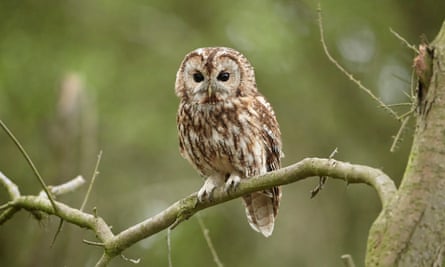King Charles’s private country estate at Sandringham in Norfolk has been linked to the deaths and disappearances of a string of legally protected birds over the past two decades, a Guardian investigation has found.
The cases include the alleged poisoning, shooting and disappearance of some of the UK’s rarest birds of prey. One of the cases involved the mysterious loss of eastern England’s last breeding female montagu’s harrier, a critically endangered species whose future in the UK is now looking bleak.
The Guardian has identified 18 cases since 2003 involving suspected wildlife offences or the alleged misuse of poisons, linked to the royal estate and neighbouring farmland owned by the king.
Timeline
Suspected wildlife offences on or near Sandringham estate
Show
The Guardian has documented 18 cases of alleged shootings, poisonings and disappearances of rare birds and related incidents linked to the Sandringham estate or surrounding land owned by the king
Red kite found dead, poisoned by two highly toxic insecticides on farmland owned by Sandringham. No suspect identified
Tawny owl was put down after being badly injured in an illegal trap. The owl had significant levels of toxic rat killer in its body. A Sandringham gamekeeper fined £500 and £470 costs
A marsh harrier found dead on the boundary of Sandringham estate, suspected poisoning by toxic pesticides. No suspect identified
Two female hen harriers were shot over Sandringham estate. The police searched part of the estate. Prince Harry, a friend and the head gamekeeper were interviewed by police. The birds were not recovered and no one was prosecuted
A sparrowhawk found on Sandringham estate poisoned by an insecticide, next to a dead pigeon laced with it. The police and Health and Safety Executive searched Sandringham buildings. They did not find the same substance but uncovered “significant safety issues” with pesticides rule breaches. Warning letter sent to Sandringham
A female montagu’s harrier, Britain’s rarest bird of prey, disappeared on land owned by Sandringham. It was fitted with a satellite tag, which also disappeared. No offence could be detected
A goshawk died near Sandringham House. Its body was incinerated by estate staff before it could be examined. Its satellite tag was posted back to the British Trust for Ornithology. No offence could be detected
Up to 40 dead wood pigeons were found piled up near Sandringham estate visitors centre. One was alive and had blood coming from its beak. The next morning the birds had been removed before they could be examined by Natural England. No offence could be detected
A dead stock dove was found close to where the dead wood pigeons were found in September 2016. Because of that previous case, it was investigated but believed to have died of natural causes
Another female montagu’s harrier disappeared near the site of the first missing montagu’s harrier. Its satellite tag also disappeared. No offence could be detected
A little owl was found dead in a Fenn trap, designed to catch stoats, on the Sandringham land. Those traps were no longer authorised for that purpose. Police said no offences were committed but the RSPCA gave advice to the head keeper to prevent this happening again
Further Fenn traps and poisons were found by anti-snaring campaigners, who complained to Norfolk police. No offence recorded
A fox was reported “spinning around” in distress in a snare on Sandringham, which led anti-snaring campaigners to be concerned about the estate
A pet dog was trapped around its neck by a snare on Sandringham land. The dog owner complained
A dead red kite was found on Snettisham beach, very close to Sandringham. Rat poisons and a shotgun pellet were detected by tests. Investigators could not identify a suspect
More Fenn traps, river traps and snares, some with poisons, on Sandringham estate were reported to Natural England, and then followed up by the HSE. No action taken
Rat poisons allegedly left in the open on Sandringham land. The HSE did not visit the rat poison locations, so no samples were analysed, but the case was added to its database
More allegedly unauthorised traps found on Sandringham. Norfolk police investigated and stated they “don’t seem to comply with best practice at the very least”
Many of the cases are detailed by official regulators in internal documents that have been released under freedom of information legislation.
The documents reveal how the police and enforcement officials have regularly investigated the Windsors’ private estate, which spans about 8,100 hectares (20,000 acres) of parkland, farmland and forestry. The latest investigation ended earlier this year.
The documents also reveal how the estate appears on occasion to have hindered official investigations. In 2016, Natural England, the conservation regulator, recorded that it was unable to investigate the suspicious deaths of up to 40 wood pigeons on the estate as it appeared the area had been “cleaned up” early one morning.

On another occasion staff burned the body of a goshawk, another legally protected raptor, which made it impossible to investigate the cause of its death.
The disclosures could be particularly uncomfortable for the king since the late Queen Elizabeth II had been patron of the Royal Society for the Protection of Birds (RSPB) since 1952. Prince Philip was patron of the British Trust for Ornithology until his death in April 2021.
The royal family is also facing questions over whether the estate has been treated leniently by official agencies, a suggestion rejected by the estate.
A spokesperson for Sandringham said that it “fully supports and cooperates with any investigation into alleged wildlife or pesticide incidents”. They said the vast majority of allegations outlined by the Guardian “were either investigated with no further action taken, or are assertions based on little or no substantive evidence”.
Only one of the incidents has led to a prosecution. In 2006 a Sandringham gamekeeper was fined £500 and £470 in costs after he admitted maiming a legally protected tawny owl in a trap. Three other charges were dropped; one of those involved the incorrect use of rat poisons.
Nicholas Crampton, the Crown Prosecution Service lawyer who prosecuted the 2006 case, said that successful conviction should have made Sandringham improve its practices but instead there were repeated incidents on its land.
The specialist in wildlife crime cases said: “By the time I retired in 2010 I was disappointed that a disproportionate number of wildlife incidents targeting raptors had been reported from the estate. It suggested a failure of management and it was in contrast to the positive response from others in Norfolk that we had also prosecuted.”
Birds of prey have been protected in the UK for decades as they are a vital part of the country’s biodiversity. Killing or disturbing them is a criminal offence under the Wildlife and Countryside Act 1981 with offenders liable to unlimited fines and up to six months in prison.
Conservation experts highlighted two incidents that were of particular concern. They involved two montagu’s harriers – the UK’s rarest and most endangered bird of prey. Only nine of the birds are now living in the UK.
The first bird went missing on Sandringham-owned farmland in August 2014 and the second in August 2017 a few hundred metres away. Both birds had been fitted with satellite tags as part of conservation programmes to help the species recover. In both cases, the tags and birds suddenly disappeared without warning.
The loss of the second montagu’s harrier, nicknamed Sally by the RSPB, had a “significant” impact on the species’ fate, said one expert. She was the female in the last surviving breeding pair of montagu’s harriers in the east of England. There are no longer any breeding pairs in the UK.
In 2020, montagu’s harriers were officially placed on the UK’s “red list” of critically endangered birds. Expert ornithologists, speaking on condition of anonymity, said the loss of Sally directly contributed to the species’ red listing.
Norfolk police investigated both cases, but said that since no bodies were recovered there was no evidence of a crime and took no action. Sandringham denied all knowledge of the birds’ disappearances.
Another incident, which was widely covered by the media at the time, occurred in October 2007 when Prince Harry and a friend were questioned by police after two hen harriers had been shot over Sandringham. There were no arrests or charges.
One of the recent cases concerned another bird of prey, a red kite, which was found dead on a beach close to the Sandringham estate in 2021. Natural England noted in an internal memo that “a red kite has been found dead in circumstances highly suggestive of illegal poisoning in an area where there have been previous poisoning incidents”.

Laboratory tests detected three different rat poisons in its liver; two could have contributed to its death. An X-ray detected a shotgun pellet in its flesh.
This was investigated by another regulator, the Health and Safety Executive, which enforces the UK’s strict pesticides and chemical regulations. It said there was no evidence to link the red kite’s death to a particular estate and took no action.
According to a Natural England internal memo written in 2009 Sandringham had a “history of pesticide incidents and other birds of prey crime”. The memo listed four cases involving the estate.
An official concluded: “It appears that even though one of the estate’s keepers faced rodenticide and illegal rodent control charges from the [2005] incident the practices have not changed … Clearly there has been a failure in the management regime.”
Conservationists have raised questions over the lack of enforcement action against Sandringham.
Over the last 23 years, the queen and now the king have received more than £15.4m in government subsidies for their farms and woods at the estate for countryside and environmental stewardship.
Under European Union rules, any landowner or farmer who received farming and environmental subsidies can have those payments cut or withdrawn if they break rules on protecting the environment. These rules are known as cross-compliance regulations.
The Rural Payments Agency, the official body that oversees these subsidies, said that since 2015 it had cut or withdrawn subsidies to farmers and landowners more than 200 times using the rules that experts say could apply to Sandringham. Those rules include the misuse of insecticides and the persecution of wild birds.
One senior conservation source, speaking on condition of anonymity, said: “If another estate had been subject to so many investigations, there would have been lots of cross-compliance stuff going on. You would expect the royal family to live to a higher standard.”
The RSPB called for much tougher action to prosecute wild crimes.
Katie-Jo Luxton, the RSPB’s director of conservation, said: “The UK has an ongoing problem with bird of prey persecution, and the majority of cases occur in connection with land managed for game bird shooting. The incidents we know of are just the tip of the iceberg and this is reflected in the fact that some species remain suspiciously absent from places they should thrive.
“We need our governments to take these crimes seriously and help ensure better enforcement of existing laws, as well as bringing in essential new legislation such as the licensing of grouse moors.”
The Rural Payments Agency said it did not comment on individual cases.
The Sandringham estate spokesperson said it “works extensively to protect local wildlife and encourage natural habitats for animals, and is actively involved in projects to reintroduce endangered bird species including the Eurasian curlew and turtle doves.” It “prides itself on all estate operations reflecting the most recent and relevant legislation, with staff abiding by best practice at all times”.
Join the exciting world of cryptocurrency trading with ByBit! As a new trader, you can benefit from a $10 bonus and up to $1,000 in rewards when you register using our referral link. With ByBit’s user-friendly platform and advanced trading tools, you can take advantage of cryptocurrency volatility and potentially make significant profits. Don’t miss this opportunity – sign up now and start trading!







Recent Comments